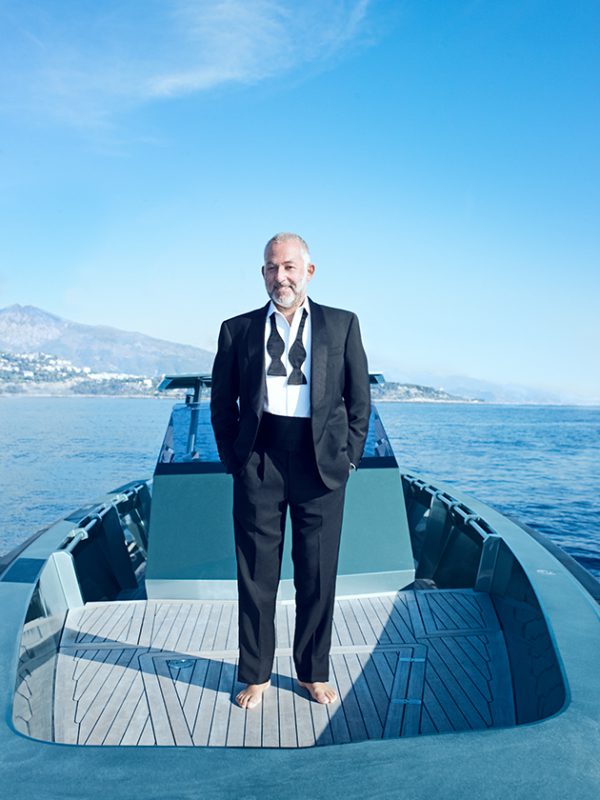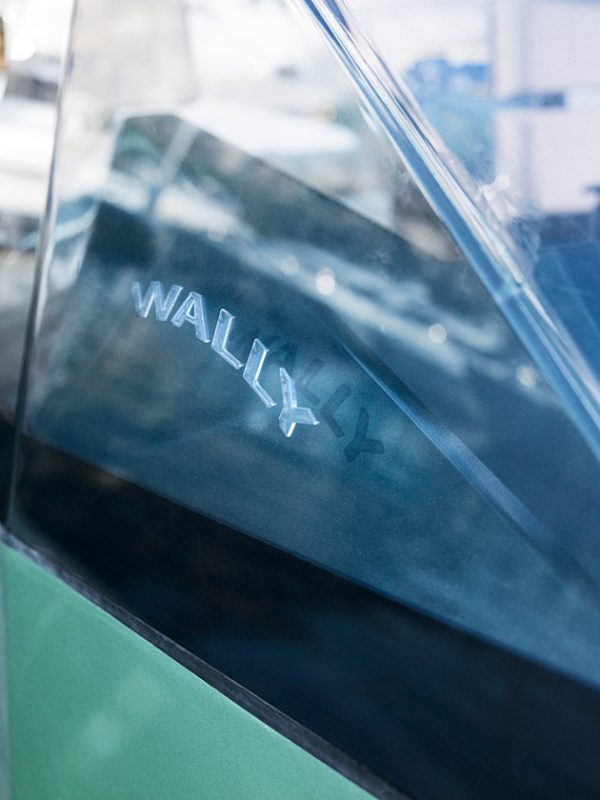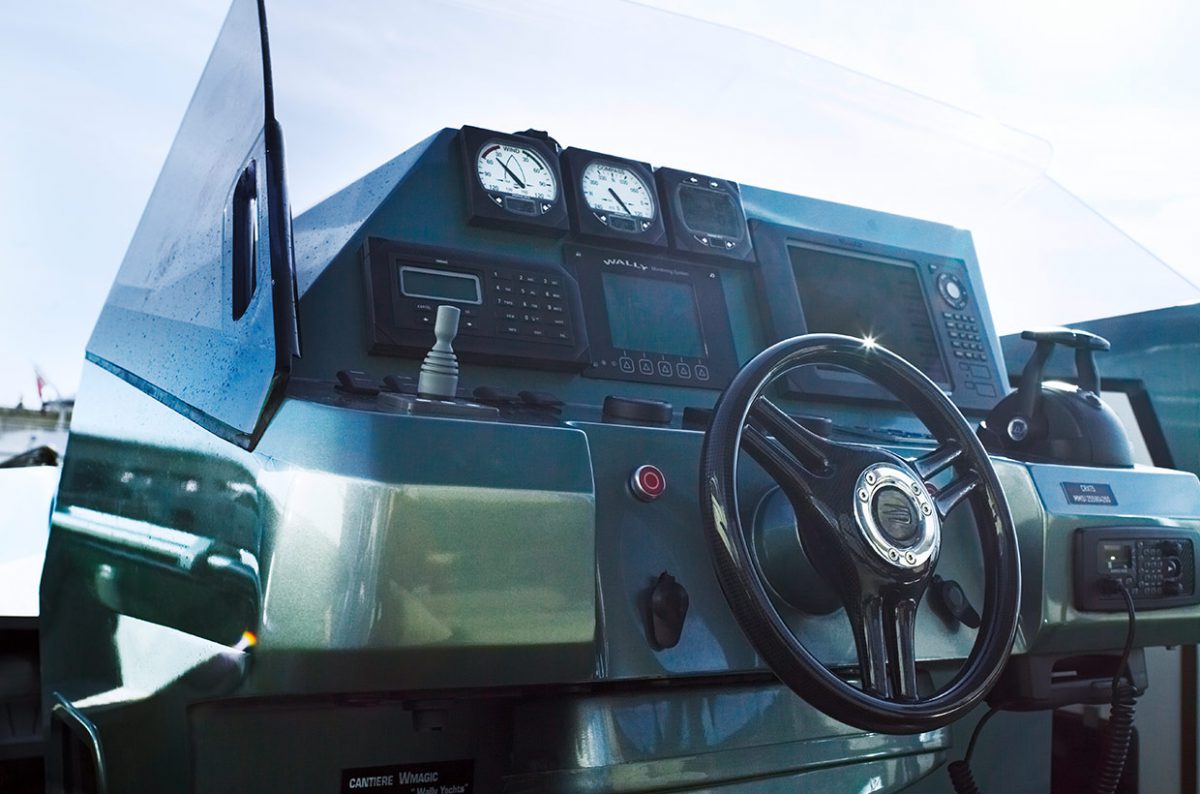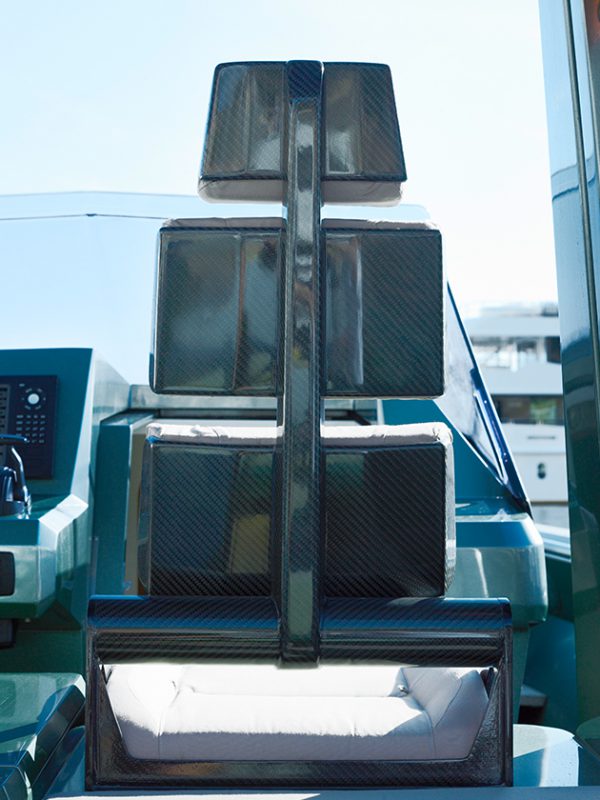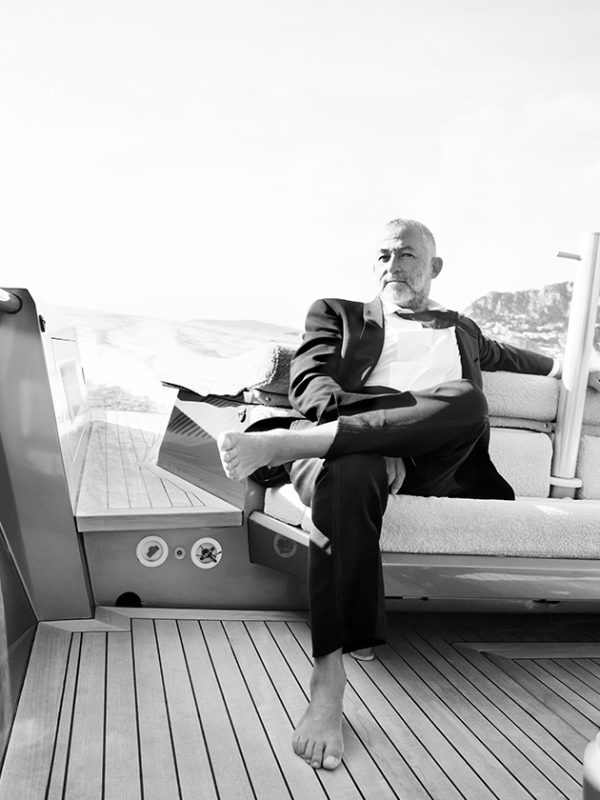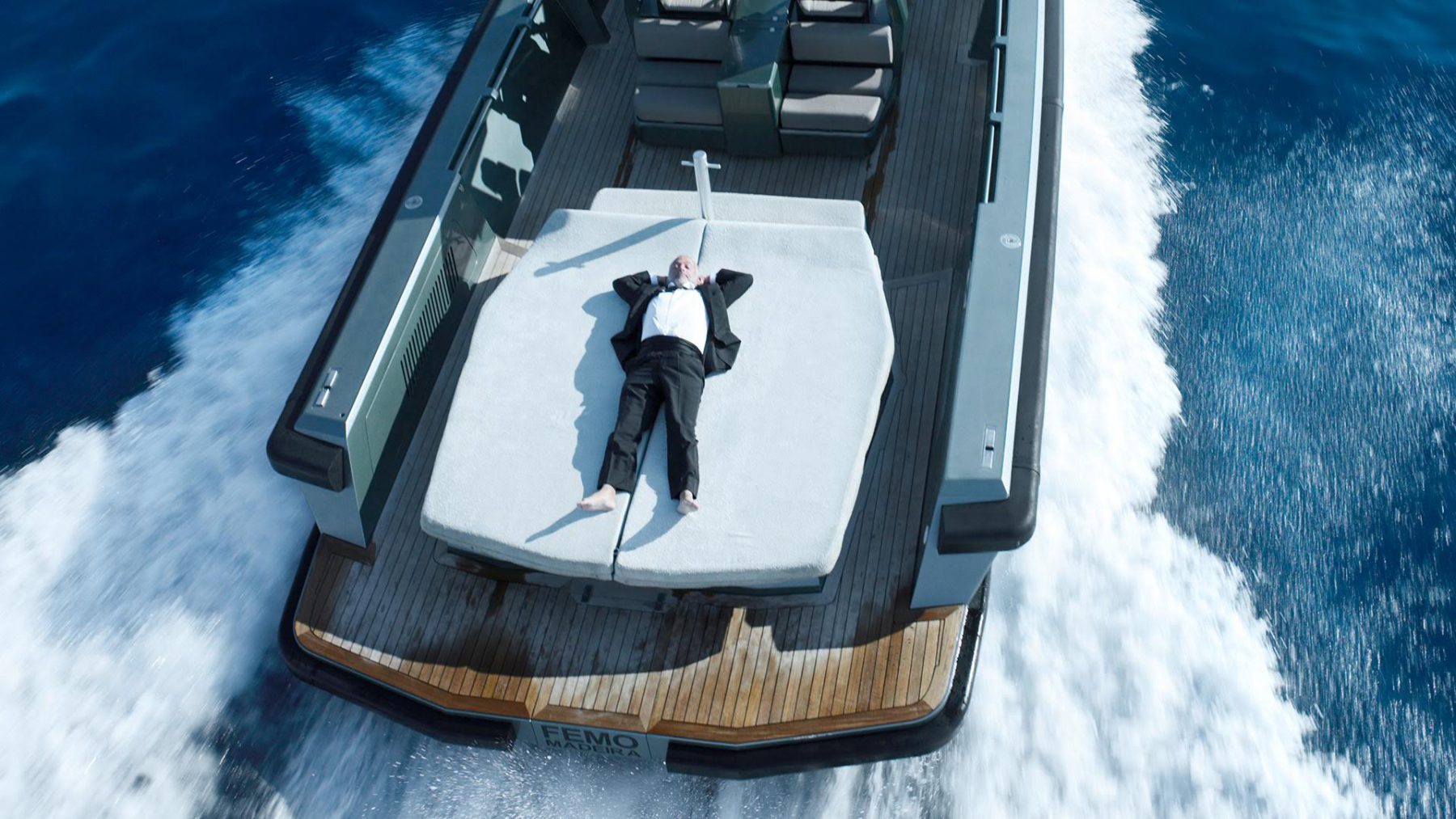Passion and Power by Michaela Cordes | 3rd March, 2007 | Personalities
Open bow tie flattering in the gushing wind, spray surging up from the stern, the Wally Tender flies headlong like a rocket across the Mediterranean – but the man on board smiles nonchalantly all the while. Where is Wally inventor Luca Bassani most in his element? “Here, right here. Aboard, on the ocean waves!” Passion manifests itself in sensitivity and restraint in the work of architect Annabelle Selldorf, who is an expert in when it comes to building for art or fashion. Interior designer Christian Heymes’ heart beats in São Paulo for his tribal art collection and fashion duo Dolce & Gabbana adores the dance on the volcano – on the Italian island of Stromboli. Read on and follow the passion!
WALLY – five letters that roll off the tongue with the wonderful lightness of a yacht riding the crest of a wave. The name that still intentionally brings Hanna Barbera’s comic dragon character “Wally Gator” to mind is now regarded as a trademark for boat design, revered for its pure perfection and copied time and again: Clean, flat decks, metallic colours with a subtle shimmer that blend with splendid wood tones, and fabrics that dazzle and caress the mind’s eye. No ornate silver and gold, no frills, no finishing touch too many.
Monte Carlo on a sunny morning. Spring is in the air, the sun glistens across the deep blue of the Mediterranean. Down by the marina, just minutes away from the heliport, lies the residence of Luca Bassani, the mastermind behind Wally. A true revolutionary. No other designer has done more to turn the look of sailing and motor yachts on its head in the 21st century than the cheeky Italian from Milano. Laid-back designer stubble, a wry grin and a twinkle in the eye – Luca Bassani on James Bond, floating islands, the envy of the competition, why women are such an inspiration and the secret of Wallymania.
“A Wally is a macho object“ Luca Bassani
Hardly anyone passes by a Wally boat without having to stop and look –regardless of whether they’re a yachtsman or not. It is often said your yachts almost exude a kind of sex appeal. What is the secret?
I was just talking to a friend about this: Almost no women used to stop and look at sailing boats in the days before Wally yachts. They might have paused to take a closer look at a powerboat perhaps. I can say for certain though that 90 per cent of women will stop and take an interest in a Wally.
How do you explain this? What is it about a Wally that appeals to women so much?
Well, I can’t tell you for sure (laughs); you can never be too sure when it comes to women. But I think there are two reasons. The lines are so clear and clean, the layout of our yachts so pure and neat. The woods and materials on deck are also meant to make you want to touch them with your naked skin. At the same time, our boats are highly technological and a little macho. That’s a very good mix and makes them highly attractive. A Wally is a technological macho object that has a softness which appeals to women as well.
Your designs are regarded as revolutionary in the yachting world. You were producing designs in a minimalist fashion long before the trend for puristic interiors arrived.
It is hard to believe now, but when I first set out it wasn’t my intention to create a designer object. I was focused on functionality. The path to achieving this automatically led to many things being hidden away and the whole becoming more sleek. Having decided to go down this path of concealing everything, the finished result is a wonderful clean deck. So the overall look is actually a product of the design, which came about as a natural consequence. It was only at the very end of the process that I also began to incorporate a little of my own personal taste.
Your yachts give the impression that perfection has been strived for in each and every detail. Would you describe yourself as a perfectionist?
I suppose I would probably say yes. I wasn’t in the slightest when I was young. But nowadays I am much clearer about what I want. So it’s a definite yes.
The classic yacht design had a relentless traditional look before Wallys sailed on to the market. When did the moment in your life come where you decided: Now I’m going to build a completely different boat?
That is some years ago now. I had sailed as a child with my parents and won several regattas, as well as the World Championships. I was on Sardinia sailing in a race once again, and I remember looking around me at the new racing boat designs. They had much more volume than cruising boats. I remember thinking how absurd it was, and that it should be the other way around. If more volume means higher performance, then it’s worth trying it out.
So you had a faster yacht in mind?
Faster and more comfortable. In 1989, I designed the first Wallygator myself because I couldn’t find a boat on the market that I wanted to buy. The very first boat with carbon bodywork, a carbon mast and a revolutionary layout. With sails like no others ever produced before and new systems for trimming them. I moved the owner’s cabin from the stern to the front to reduce the noise heard and allow for more fresh air. I have always wondered why nobody else came up with the idea before me.
You approached two well-known ship architects for the new design, neither of whom wanted to become involved. Finally you worked together with a young Italian architect on the first Wallygator. What were the initial reactions to such a dramatic new direction?
Curious people came time and again to look at my boats over the first few years, but they were scared of them. Scared of the new design, the new technology. They weren’t yet ready to buy something so provocatively new. But then we eventually received our first commission.
Nowadays your list of clients includes such glamorous names as Valentino, Dolce and Gabbana, and Loro Piana, to mention just a few. Can you describe the typical Wally client?
They are people who embrace a challenge and like to show that they stick out from the crowd. They own a Wally because they know that a yacht of this kind is a cultural statement as well. A Wally is a status symbol, of course, but size is not so much the issue here. You can spend the same amount of money on a much bigger boat than a Wally. One of our principles is: Less is more. It’s all about quality rather than quantity. This is also true when it comes to the interior. Our approach is not to use marble, gold and as many different types of exclusive woods as possible. The essential elements are much more important. The lines, the materials, the colours. We don’t want ten, we just want one. We want the very best materials, but just one of them.
“The Wally Island is the future” Luca Bassani
In contrast to the classic blue or white, you were the first to produce yachts painted in metallic colours just like cars.
Yes, conceiving colours in a completely new way was certainly one of the major sensations for us. Metallic paints appear much more natural within nature than the boat colours traditionally used. Why? Well, look around in nature. A leaf never consists of just one green tone – it is made up of millions of pixels. The same effect can be achieved with metallic colours. A Wally sailing close to the rocks in a bay blends in far better with its surroundings. Other yachts, by contrast, almost appear like a blot on the landscape.
After entering the market for sailing boats, you went on to make waves in the far more established motorboat market with the launch of the €21 million Wally Power. The “smaller” version – the Wally Tender – is now your bestseller and seems to be reaching a similar cult status to that which the Riva yachts once enjoyed. How do you recall the reactions triggered by your most daring creation to date?
There was uproar within the industry! Everyone said: How could he? Ugly! That will never work! Aside from this, I was hailed as a hero by the media and the younger generation. It would certainly have been harder to establish us as a brand if we had started with motorboats, which were marooned in a rococo tradition to an even greater extent. Even the most modern boats launched on the market are often so lacking in taste that I cannot begin to imagine that someone may have designed the interior of their home in the same style as well. The most touching compliment I received was for my Wally Power, from a very old lady at 7 o’clock in the morning in the Cala di Volpe Bay on Sardinia. She came out to us from her hotel with her husband in a small boat and said: I am very old and, believe me, I have seen a few boats in my time, but this is by far the most beautiful! And that from an English lady who must have been 80 years old!
You have just unveiled a new 143-foot Wally and have worked on your largest yacht to date – a 148-foot Wally. 100-foot private yachts will soon be commonplace. If you were to chance a look into the future, where is the Wally journey headed?
The trend will definitely revert back to smaller boats. You see, the longer the boat, the more distant the relationship with the sea becomes, which is after all the reason for buying a boat in the first place. I’m involved with many people though who have enormous financial means at their disposal, so I predict that the future will see people buying small, private fleets of boats. Two small powerboats, a sailing boat for racing with friends and one for cruising at leisure. I can well imagine that all this will be the case.
A vision that could well fit in with your next big project – the Wally Island?
The origin for this idea almost took on a life of its own. It is becoming increasingly difficult to find a plot of land with private sea access, a so-called “pied dans l’eau”. Even if you’re prepared to spend large amounts of money. The solution? Buy a large boat! But it would obviously have to offer the same amount of comfort as a home. The idea came about as I was thinking about developing a ship for residing in over an extended period in the year, without life on land being missed. A ship that accommodates a plot of land for the owners of around 100 sqm and does not need to dock in any harbours. With enough space to stay physically active, play a round of tennis or jog around the deck. Imagine a flat tanker ship which could be lived on. You’d stow your tender, helicopter and sailing boats at the stern and go for a walk through your palm garden at the bow. There are no limits to your imagination.
After all the initial criticism, there are more and more competitors who seem to be basing their own creations on your design. How does that make you feel?
(laughs) Naturally, I would have liked to have been taken seriously much earlier on. But thankfully so far it is only parts of the design that are being copied and not the entire system. I have yet to see another yacht that bears the soul of a Wally.
Didn’t James Bond come knocking on your door? Your Wally Power would make the ideal boat for 007’s evil adversary.
I’m afraid not. Although I’m a great Bond fan myself. I have dreamt my whole life of being James Bond just once. Sean Connery is unsurpassed in my eyes.
But just like James Bond, women are also very important in your life too.
Women are wonderful beings and have always been a great source of inspiration for me. First and foremost my wife, of course. She has great style and a lot of taste. My mother also had a large impact on me though as well, giving me a sense for the right colours.
